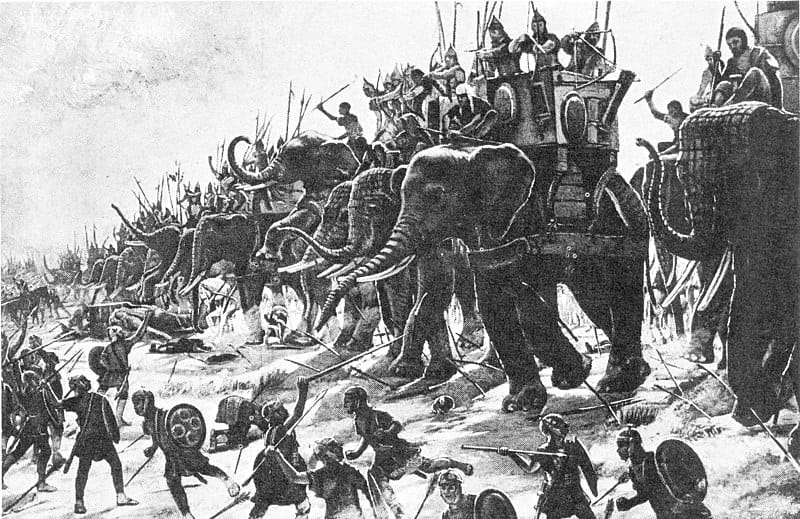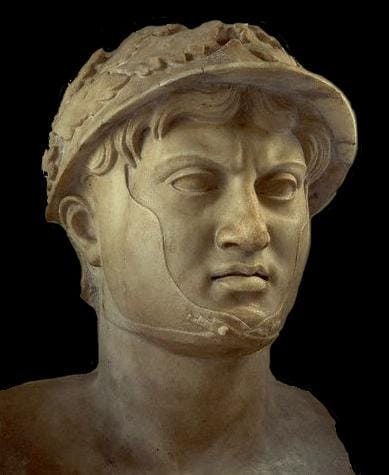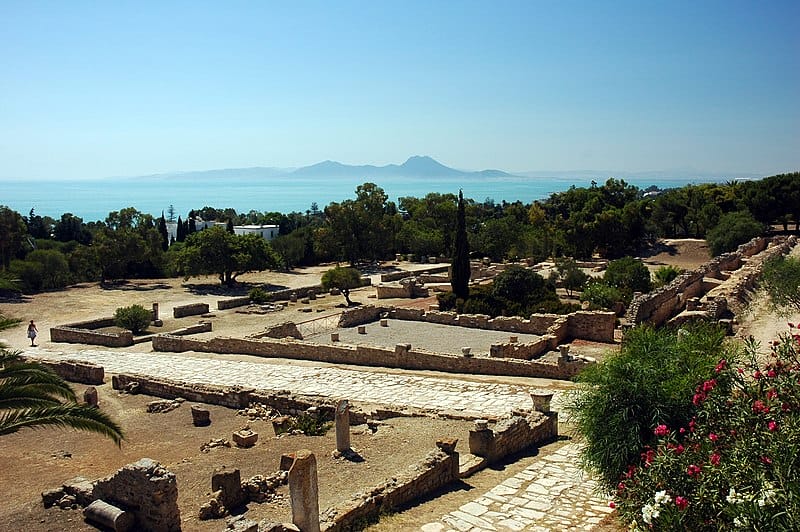The Battle of Heraclea marks an important moment in the Pyrrhic War, a conflict that demonstrated the military capabilities of the Roman Republic and the Hellenistic state of Epirus. Fought in 280 BC, this encounter was the first time Rome faced a Hellenistic army on the Italian peninsula. Pyrrhus of Epirus, a respected and ambitious general, led his forces to Italy with the intent to assist the city of Tarentum in its conflict against Roman expansion.
The engagement at Heraclea was significant not only for its immediate tactical outcomes but also for its tactical innovations and long-term strategic consequences. Pyrrhus stands different than the former foes for his use of war elephants, a shocking and formidable sight to the Roman legions, which played a crucial role in the battle. While the Epirote king managed to secure a victory, it was not without substantial losses – a fact that would later coin the term “Pyrrhic victory,” meaning a win with devastating cost to the victor.

Key Takeaways
- The Battle of Heraclea was a consequential conflict between Rome and Epirus, setting the stage for subsequent engagements in the Pyrrhic War.
- Pyrrhus achieved a costly victory, introducing war elephants to the battlefield, which had a lasting impact on Roman military tactics.
- Although victorious, the heavy casualties sustained by Epirus at Heraclea led to the term “Pyrrhic victory,” underscoring the battle’s lasting legacy in military history.
Historical Context
The Battle of Heraclea represents a critical point in the hostilities between the Roman Republic and the city of Tarentum, supported by Epirus. It is set against the backdrop of Roman expansion in Italy, heightened by the strategic importance of Southern Italy and the complex web of alliances and rivalries among various states, including local Greek colonies and Italic tribes.
Political Landscape
During the late 4th century BC, the Roman Republic was engaged in a concerted effort to extend its influence across the Italian peninsula. The rich and culturally vibrant region of Magna Graecia, consisting of Greek colonies including Tarentum, was becoming increasingly wary of Rome’s territorial ambitions. Tarentum, situated on the Gulf of Taranto in Southern Italy, regarded the Roman incursion into neighboring regions, such as Apulia and Lucania, as a direct threat to its own interests and autonomy.
Strategic Significance of Southern Italy
Southern Italy, particularly the areas of Apulia, Lucania, and Campania, was sought after for its fertile lands, conducive to agriculture, and its position, which provided access to important trade routes across the Mediterranean. This region, often referred to as Magna Graecia, was not only a breadbasket but also a cultural and economic bridge between the Greek world and the indigenous Italic peoples, such as the Samnites.
Alliances and Rivalries
Tarentum’s appeal for military assistance from Epirus – led by King Pyrrhus, one of the most capable generals of the Hellenistic era – brought a seasoned Greek military force to Southern Italy. The city of Thurii and other states in Magna Graecia also found themselves caught between the ambitions of Rome and the defensive strategies of Tarentum and their allies. In contrast, Rome had forged alliances with local Italic tribes, further complicating the intricate network of rivalries. The Samnites and other tribes like Lucanians, although having their own contentions with Rome, united against the common threat posed by foreign Greek intervention.

Forces Involved
In the Battle of Heraclea, the composition of both Epirote and Roman forces played a crucial role. With Epirote forces led by King Pyrrhus and the Roman legions marching under the consular command, the comparative strengths of these armies were important to the battle’s outcome.
Epirote Army Composition
The Epirote forces were a formidable blend of well-trained units. King of Epirus, Pyrrhus, brought a diverse army that included phalanx infantry formations, which formed the core of his battle strategy. Accompanying these were cavalry units and archers, providing mobility and ranged attack capabilities. A significant feature of his forces were the twenty war elephants, which were a psychological weapon as much as a physical one, intimidating to those not accustomed to them. Pyrrhus’s army, with the support of allies such as Taranto, comprised a sophisticated military force designed for versatility on the battlefield.
Roman Military Structure
The Roman army stood as a testament to military organization and tactics. Roman forces primarily consisted of legions, with the Roman legion embodying the empire’s military might. These legions were largely made up of infantry and soldiers who were citizens of Rome and provided their own equipment. In addition to the citizen soldiers, the Roman military structure included specialized units, such as cavalry and light-armed skirmishers. During the time of the Battle of Heraclea, the Roman infantry was undergoing tactical evolutions, moving away from the Greek phalanx towards a more flexible manipular formation, which could prove advantageous or detrimental depending on the circumstances.
Comparative Strengths
The Epirote and Roman armies each had their unique advantages. Pyrrhus’s use of war elephants and a mixed-force strategy utilized the phalanx for its staying power and the cavalry and archers for flexibility. The Romans, on the other hand, relied on their legendary discipline and the manipular flexibility of their legions. Each side’s approach to warfare was a reflection of their tactical philosophies – where the Epirote forces were diverse – the Romans were uniform. Where the Epirotes sought versatility – the Romans sought reliability. This clash of military ideologies and compositions set the stage for one of the most compelling engagements of the time.
The Battle
The Battle of Heraclea marked a significant chapter in ancient warfare with its first recorded instance of war elephants being used in Europe and the clever military tactics that led to a Pyrrhic victory.
Initial Encounter
At the onset of the Battle of Heraclea, the cavalry and infantry on both sides engaged near the banks of the River Siris. The Samnites, allied with Pyrrhus, combined with the Greek slingers and archers to support the initial fight against the Roman maniples.
Use of Elephants
The notable turning point in the battle came with the introduction of war elephants. The Romans, unfamiliar with these massive creatures, were thrown into disarray as the elephants charged through their formations, causing widespread panic among the troops.
Turning Points
Throughout the engagement, several turning points materialized that ultimately defined the outcome. Pyrrhus’s cavalry executed well-timed maneuvers that disrupted the Roman flanks. Followed by the relentless assault by elephants, Pyrrhus managed to snatch a Pyrrhic victory – costly yet successful, with heavy casualties on both sides.
Aftermath
The Battle of Heraclea marked a turning point in the Pyrrhic War, where the forces of King Pyrrhus of Epirus achieved a Pyrrhic victory over the Roman Republic. The cost was substantial for both the victor and the vanquished, setting the stage for future hostilities in Southern Italy and beyond. The main problem was that with the forces he had left, Pyrrhus couldn’t complete his Italian campaign.
Casualties and Losses
The battle was brutal and left both sides with significant casualties. Rome lost a considerable portion of its army, including key officers and thousands of soldiers. King Pyrrhus of Epirus sustained heavy losses as well, with the depletion of his forces rendering the victory bittersweet and casting doubt over his capability to maintain a prolonged campaign in Italy.
Strategic Consequences
Strategically, the battle’s outcome had wide-reaching implications. It halted the Roman expansion in the South for a time and bolstered the morale of the Greek cities in Magna Graecia, who saw Pyrrhus as a liberator from Roman encroachment. The immediate aftermath leads Rome to reconsider its military tactics when facing war elephants, a novel threat on the battlefield. Meanwhile, Publius Valerius Laevinus, the Roman commander, though defeated, managed to keep his forces intact enough to ensure Rome could continue the fight.
Additionally, the outcome of the battle indirectly prompted a geopolitical shift, with Carthage beginning to see the value in an alliance with Rome against the common threat of Hellenistic kingdoms, setting the stage for future conflicts in Sicily and the wider Western Mediterranean.

Source: Calips, CC BY-SA 3.0 https://creativecommons.org/licenses/by-sa/3.0/, via Wikimedia Commons
Historiography
The historiography of the Battle of Heraclea is multifaceted, with both ancient sources providing foundational narratives and modern interpretations offering critical analyses of these early accounts.
Ancient Sources
Ancient historiography on the Battle of Heraclea primarily revolves around the works of authors such as Plutarch, Livy, and Dionysius. Plutarch provides a detailed narrative in his “Life of Pyrrhus,” which is crucial for understanding the tactics of Pyrrhus of Epirus and his use of phalangites – the Greek heavy infantry. Livy, on the other hand, offers a Roman perspective that delves into the Samnite War and the role of the Roman Republic in the wider context of the Roman conquest of Italy.
This battle marked a significant encounter between these forces, featuring critical figures like Lucius Valerius. The accounts also mention regional players like the Bruttians and the city of Rhegium, highlighting the complex alliances and hostilities in the region of Latium and Calabria.
Modern Interpretations
Modern historical analysis of the Battle of Heraclea scrutinizes the bias and reliability of ancient texts and attempts to reconstruct the engagement with contemporary understandings of warfare. Discussions often pertain to the battle’s broader implications, such as its relevance to the eventual Roman dominance over Calabria and the subsequent battle of Asculum. Modern scholars also explore the geopolitical dynamics involving figures like Ptolemy Keraunos and Agis, contextualizing the local power play within the framework of Metapont and Appian literature. This analysis provides a lens to view the battlefield tactics, such as the deployment of phalangites, and question the hyperbolic elements that may adorn the ancient records.
Legacy
Impact on Roman Warfare
The encounter between the Roman legions and Pyrrhus’s forces, which included the renowned Thessalian cavalry, exposed the limitations of the Roman phalanx and underscored the need for greater flexibility on the battlefield. The Romans, learning from their experiences in Lucania and Apulia, where Heraclea is located, began to adapt their military strategies. The Samnite Wars had already seen Rome’s legions tested, but it was post-Heraclea that the Roman military apparatus incorporated crucial innovations, including the manipular formation that enhanced their troops’ agility and adaptability against opposing forces.
Cultural and Political Influences
Heraclea, belonging to Magna Graecia, the area of Greek colonies in southern Italy, became a crucible for cultural and political conflict and integration. The battle significantly affected the Greek cities in Italy, such as Thurii, Locris, and Metapontum, aligning them more closely with Ptolemaic Egypt and realms influenced by Alexander the Great rather than Rome.
This led to increased political pressure on Rome to secure its borders and assert its dominance, influencing the political narratives that both aristocrats and democrats would employ to rally support for the Roman Republic during campaigns in Campania and other strategic locations like Capua and Venusia. Leading figures such as Publius Cornelius Scipio and Quintus Emilius Barbula, carrying their experiences from the Third Samnite War, became exemplars of the evolving Roman political and military establishment.
The aftermath of the Battle of Heraclea rippled through the ensuing decades, as it helped shape Roman military practices and set into motion a complex web of cultural-political changes that would define the trajectory of the region’s history.

People Also Ask:
Who were the main combatants in the Battle of Heraclea?
The main combatants in the Battle of Heraclea were the forces of Pyrrhus of Epirus and the Roman Republic. Pyrrhus was one of the strongest Hellenistic kings of his time, and he crossed to Italy to assist the city of Tarentum against Rome.
What were the notable tactics employed during the Battle of Heraclea?
During the Battle of Heraclea, Pyrrhus employed the phalanx, a tight infantry formation used by Hellenistic armies, along with war elephants, which were a novelty to the Romans and caused disruption in their ranks. This tactical use of war elephants was crucial to his victory in the battle.
How did the Battle of Heraclea influence subsequent conflicts in the Pyrrhic War?
The Battle of Heraclea set the stage for future engagements in the Pyrrhic War by demonstrating the effectiveness of war elephants against Roman legions. However, it also showcased Pyrrhus’ heavy reliance on costly victories, foreshadowing the unsustainable nature of his campaign in Italy.
What were the estimated casualties of the Battle of Heraclea?
Estimates of the casualties at the Battle of Heraclea suggest that the Romans may have suffered around 7,000 losses, while Pyrrhus’ casualties were significantly fewer though still considerable for his smaller force.
In what way was the Battle of Heraclea a Pyrrhic victory?
The term “Pyrrhic victory” originates from the Battle of Heraclea, as Pyrrhus won the battle but incurred great losses, weakening his army to a state that questioned the worth of his victory given its high cost in terms of troops.
What led Pyrrhus of Epirus to engage in the Italian campaign?
Pyrrhus was invited by the city of Tarentum in southern Italy to aid them against the expanding power of the Roman Republic. The Tarentines sought his expertise in warfare and his reputation as a formidable commander to counter Rome’s increasing dominance.
Hello, my name is Vladimir, and I am a part of the Roman-empire writing team.
I am a historian, and history is an integral part of my life.
To be honest, while I was in school, I didn’t like history so how did I end up studying it? Well, for that, I have to thank history-based strategy PC games. Thank you so much, Europa Universalis IV, and thank you, Medieval Total War.
Since games made me fall in love with history, I completed bachelor studies at Filozofski Fakultet Niš, a part of the University of Niš. My bachelor’s thesis was about Julis Caesar. Soon, I completed my master’s studies at the same university.
For years now, I have been working as a teacher in a local elementary school, but my passion for writing isn’t fulfilled, so I decided to pursue that ambition online. There were a few gigs, but most of them were not history-related.
Then I stumbled upon roman-empire.com, and now I am a part of something bigger. No, I am not a part of the ancient Roman Empire but of a creative writing team where I have the freedom to write about whatever I want. Yes, even about Star Wars. Stay tuned for that.
Anyway, I am better at writing about Rome than writing about me. But if you would like to contact me for any reason, you can do it at contact@roman-empire.net. Except for negative reviews, of course. 😀
Kind regards,
Vladimir
